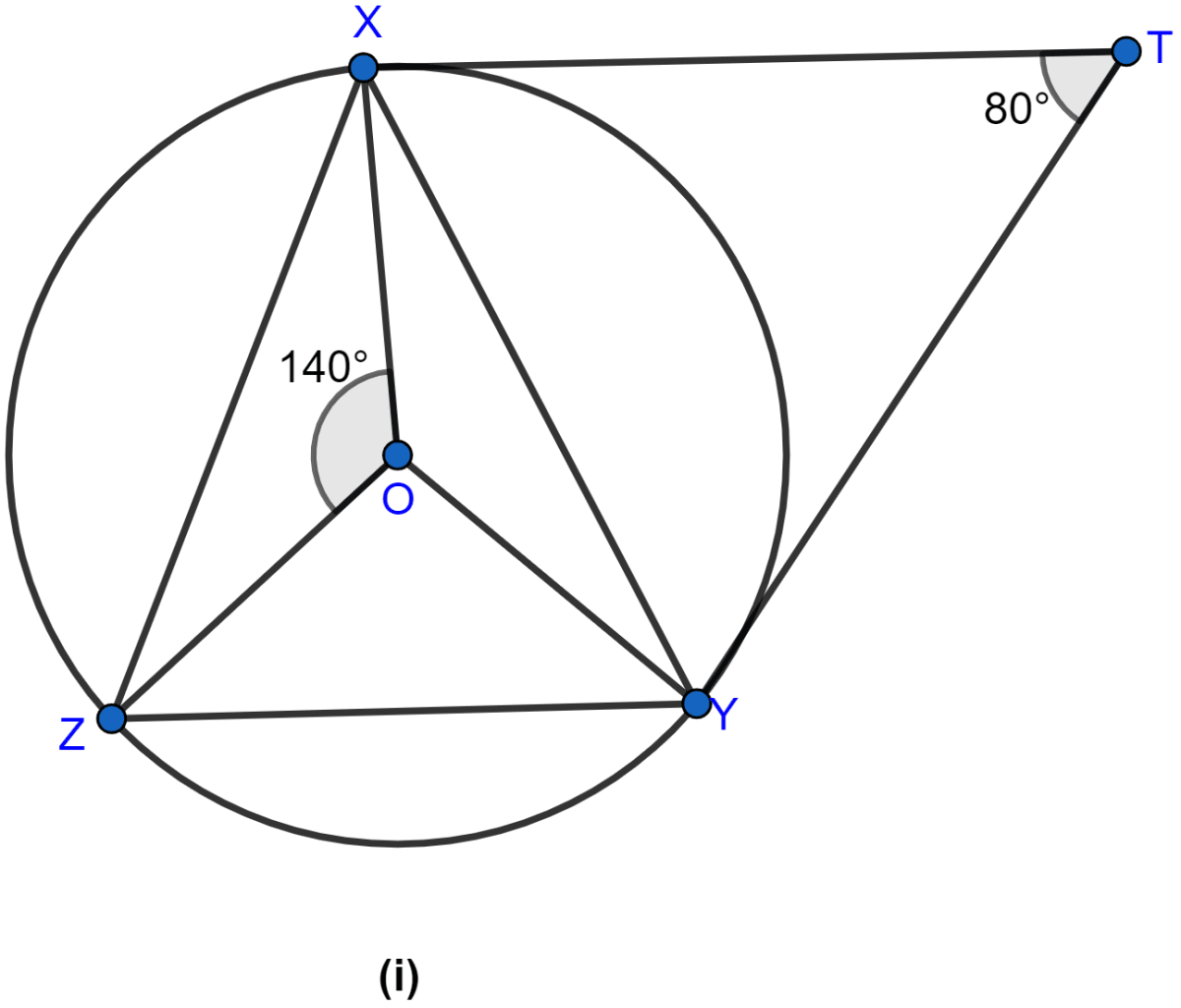Mathematics
In the figure (ii) given below, O is the center of the circle and PT is the tangent to the circle at P. Given ∠QPT = 30°, calculate
(i) ∠PRQ
(ii) ∠POQ.

Circles
22 Likes
Answer
From figure,
OP ⊥ PT (∵ tangent at a point and radius through the point are perpendicular to each other.)
∴ ∠OPT = 90°.
Given, ∠QPT = 30°.
From figure,
∠OPT = 90°
∠OPQ + ∠QPT = 90°
∠OPQ + 30° = 90°
∠OPQ = 90° - 30° = 60°.
In △OPQ,
OP = OQ (∵ both are equal to radius of the circle.)
So, the triangle is isosceles. So,
∠OQP = OPQ = 60°.
Since sum of angles in a triangle = 180°.
In △OPQ,
⇒ ∠OQP + ∠OPQ + ∠POQ = 180°
⇒ 60 + 60 + ∠POQ = 180°
⇒ 120 + ∠POQ = 180°
⇒ ∠POQ = 180° - 120°
⇒ ∠POQ = 60°
Reflex ∠POQ = 360° - ∠POQ = 360° - 60° = 300°.
Arc PQ subtends Reflex ∠POQ at the centre and ∠PRQ at the remaining part of the circle.
∴ Reflex ∠POQ = 2∠PRQ (∵ angle subtended at centre by an arc is double the angle subtended at remaining part of circle)
300° = 2° × ∠PRQ
∠PRQ = = 150°.
(i) Hence, the value of ∠PRQ = 150°.
(ii) Hence, the value of ∠POQ = 60°.
Answered By
12 Likes
Related Questions
In the figure (ii) given below, AP and BP are tangents to the circle with centre O. Given ∠APB = 60°, calculate :
(i) ∠AOB
(ii) ∠OAB
(iii) ∠ACB

In the figure (i) given below, O is the centre of the circumcircle of triangle XYZ. Tangents at X and Y intersect at T. Given ∠XTY = 80° and ∠XOZ = 140°, calculate the value of ∠ZXY.

Two chords AB, CD of a circle intersect internally at a point P. If
(i) AP = 6 cm, PB = 4 cm and PD = 3 cm, find PC.
(ii) AB = 12 cm, AP = 2 cm, PC = 5 cm, find PD.
(iii) AP = 5 cm, PB = 6 cm and CD = 13 cm, find CP.
In the figure (i) given below, PT is a tangent to the circle. Find TP if AT = 16 cm and AB = 12 cm.
